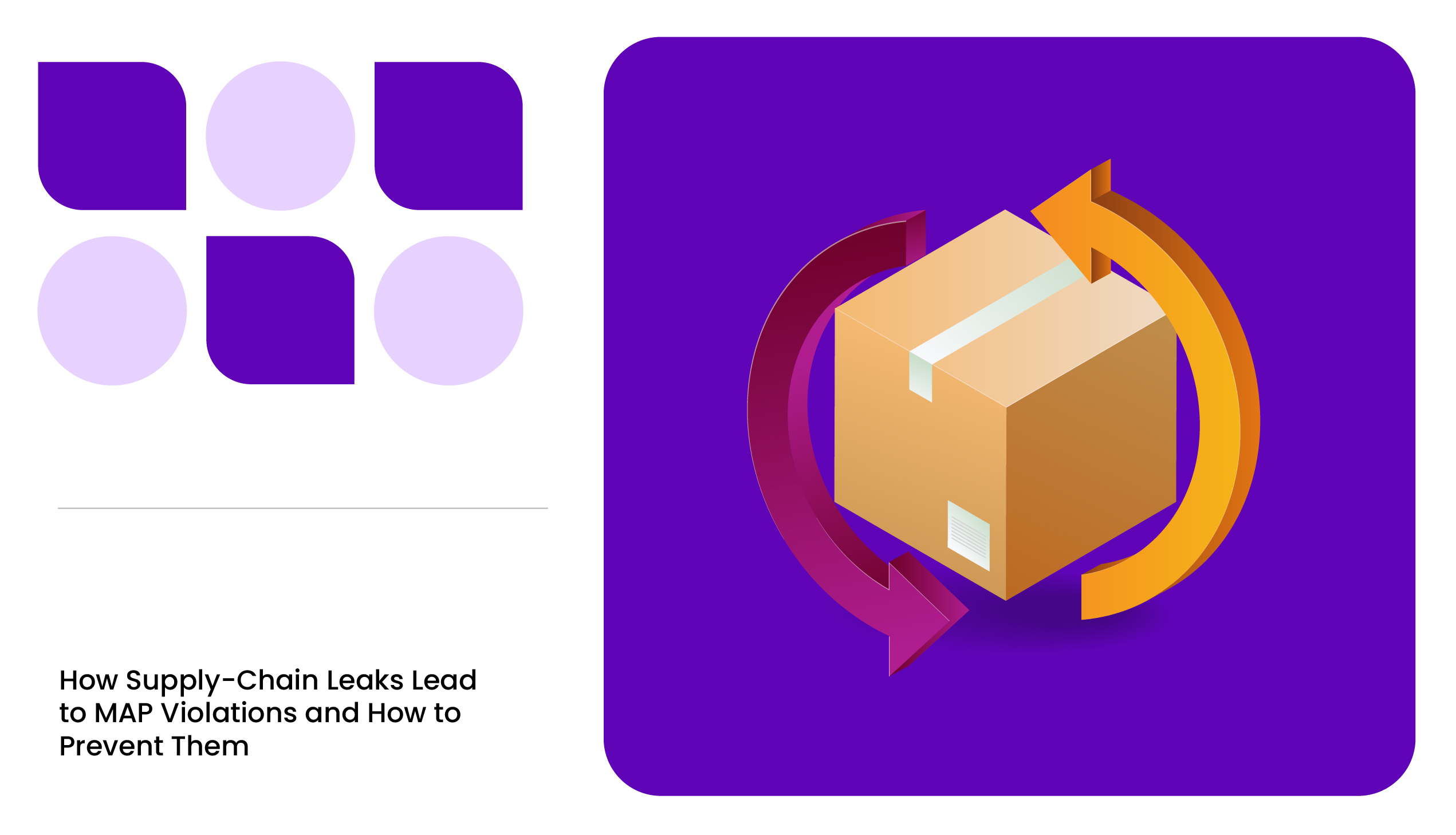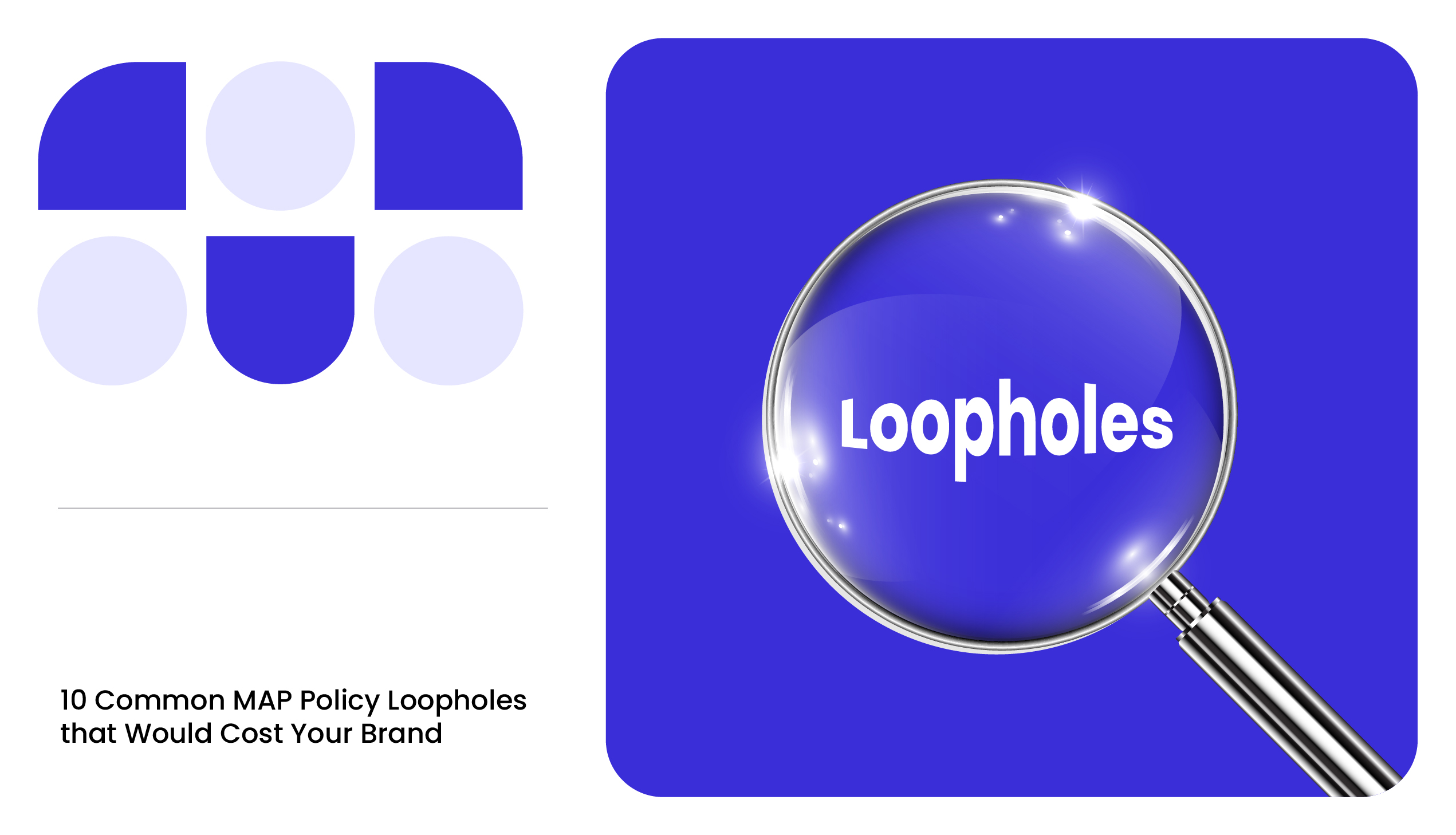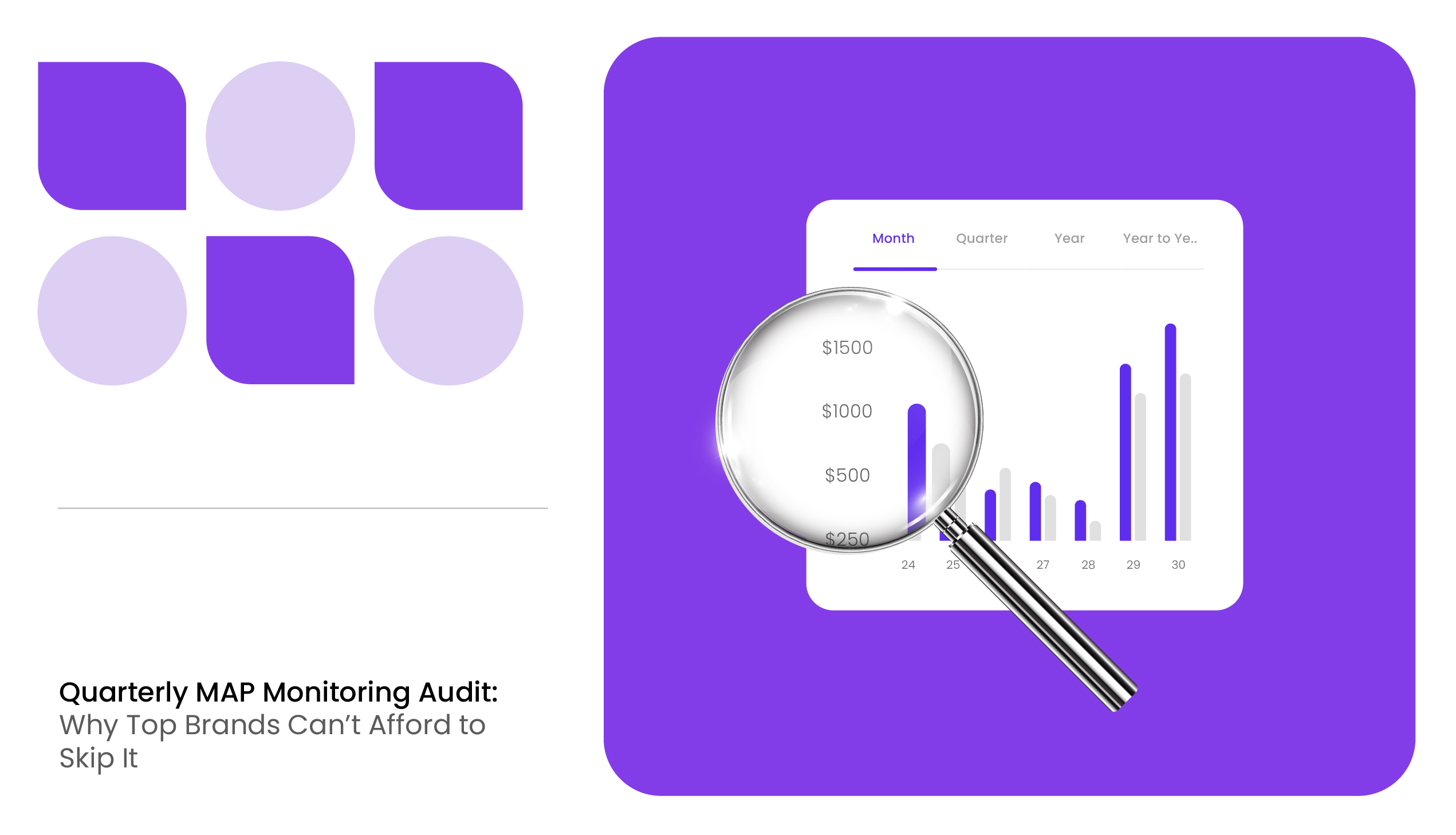Discipline is a crucial asset for succeeding in any endeavor. It can be attained by establishing certain ground rules. MAP enforcement is one such rule that helps to maintain brand integrity in the e-commerce business.
What Are the Different Stages in MAP Policy?
The MAP policy is a document created by brands as a rule book for resellers. It serves as one of the yardsticks for pricing products. A minimum price is set for each product sold under the brand. This way, resellers cannot advertise the product below MAP price.
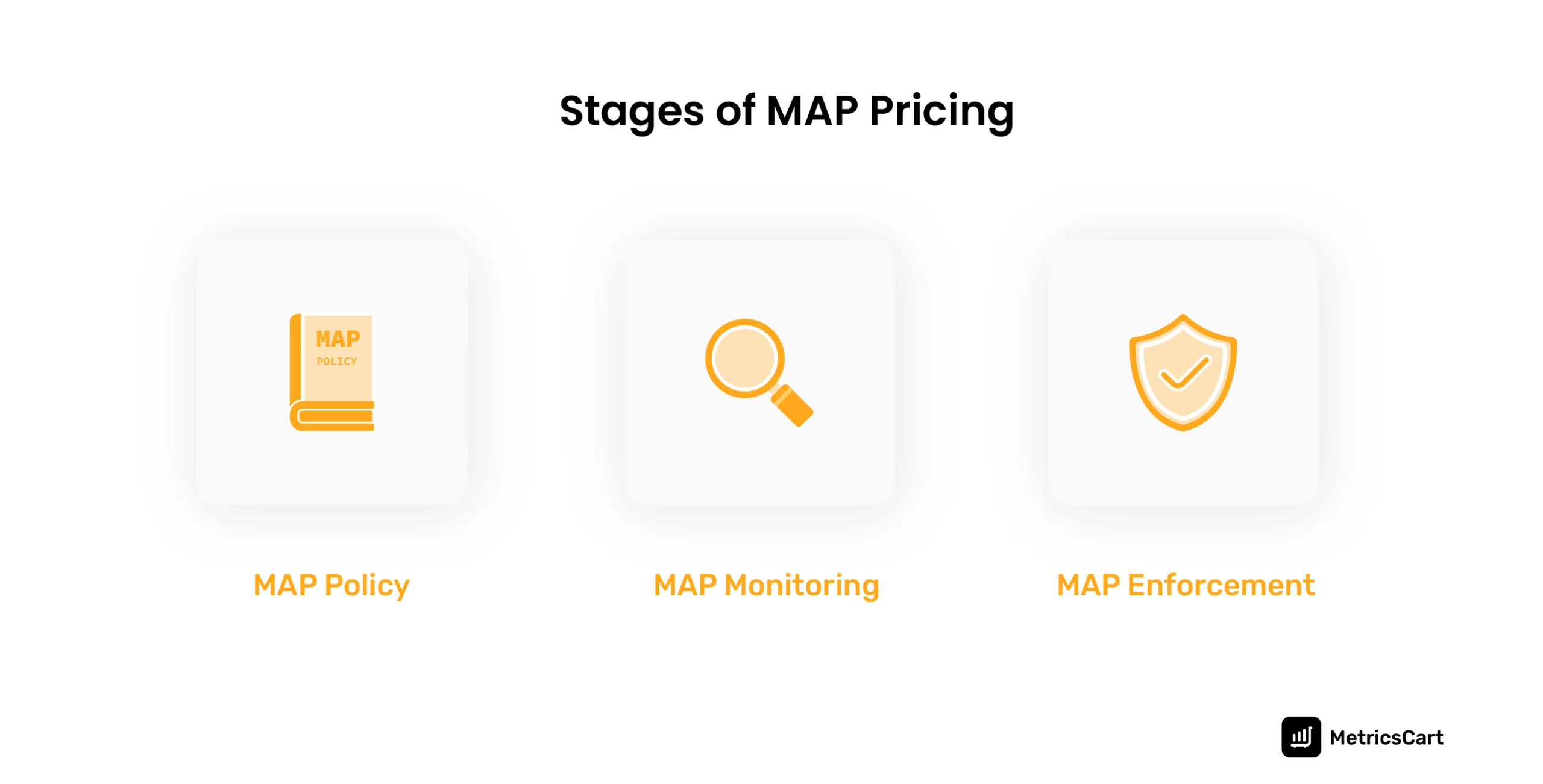
MAP policy is about implementing the minimum advertised price or listed price. It is different from the manufacturer’s suggested retail price or MSRP.
Read more: MSRP vs. MAP: Understanding Retail Price Terminologies
The process doesn’t end there. In addition to MAP policy, the brand must continuously monitor the resellers for MAP violations. There is a cause-and-effect relationship between MAP enforcement and violations. Enforcement happens after identifying violations.
What Is MAP Enforcement?
MAP policy enforcement is the process of enforcing a brand’s MAP policy in multiple marketplaces. It also executes legal processes against non-compliant retailers. MAP enforcement strategies include warning, suspending, or even banning a reseller from selling the brand’s products.

In simple terms, MAP violation monitoring involves identifying violations in the marketplace, and enforcement involves taking action against the violators.
Read more: MAP Monitoring for Online Sellers: What You Need To Know
Why Is MAP Enforcement Important?
As stated above, MAP pricing enforcement instills a sense of discipline and responsibility in the reseller’s mind. Without a proper enforcement strategy, resellers will likely use low prices to increase sales. This trend will negatively affect the brand as consumers lose trust and credibility.
According to a 2020 study by Ayalet Israeli, a Marvin Bower associate professor at Harvard Business School, unauthorized resellers committed MAP violations half the time, while authorized resellers had a 20% violation rate. The study also found that only 41% of MAP policies out of 500 clearly laid out the consequences of MAP violations.
Read more: How to Stop Unauthorized Sellers on Amazon?
What Are the Benefits of Online MAP Enforcement for Brands and Consumers?
MAP enforcement benefits include:
- Prevents price erosion
- Controls MAP policy violations
- Consistent profit margins
- Promotes healthy competition
- Sustains brand integrity
- Encourage high-quality sellers
Besides retailers and brands, MAP policy enforcement benefits the end consumer. These benefits include:
- Better offers and deals
- 100% original products
- Detailed product descriptions
- Prompt warranties and return policies
What Are the Challenges for MAP Enforcement?
MAP policy enforcement is easier said than done. The enforcement strategy looks executable on paper, but enforcing and following up are challenging in the real world.
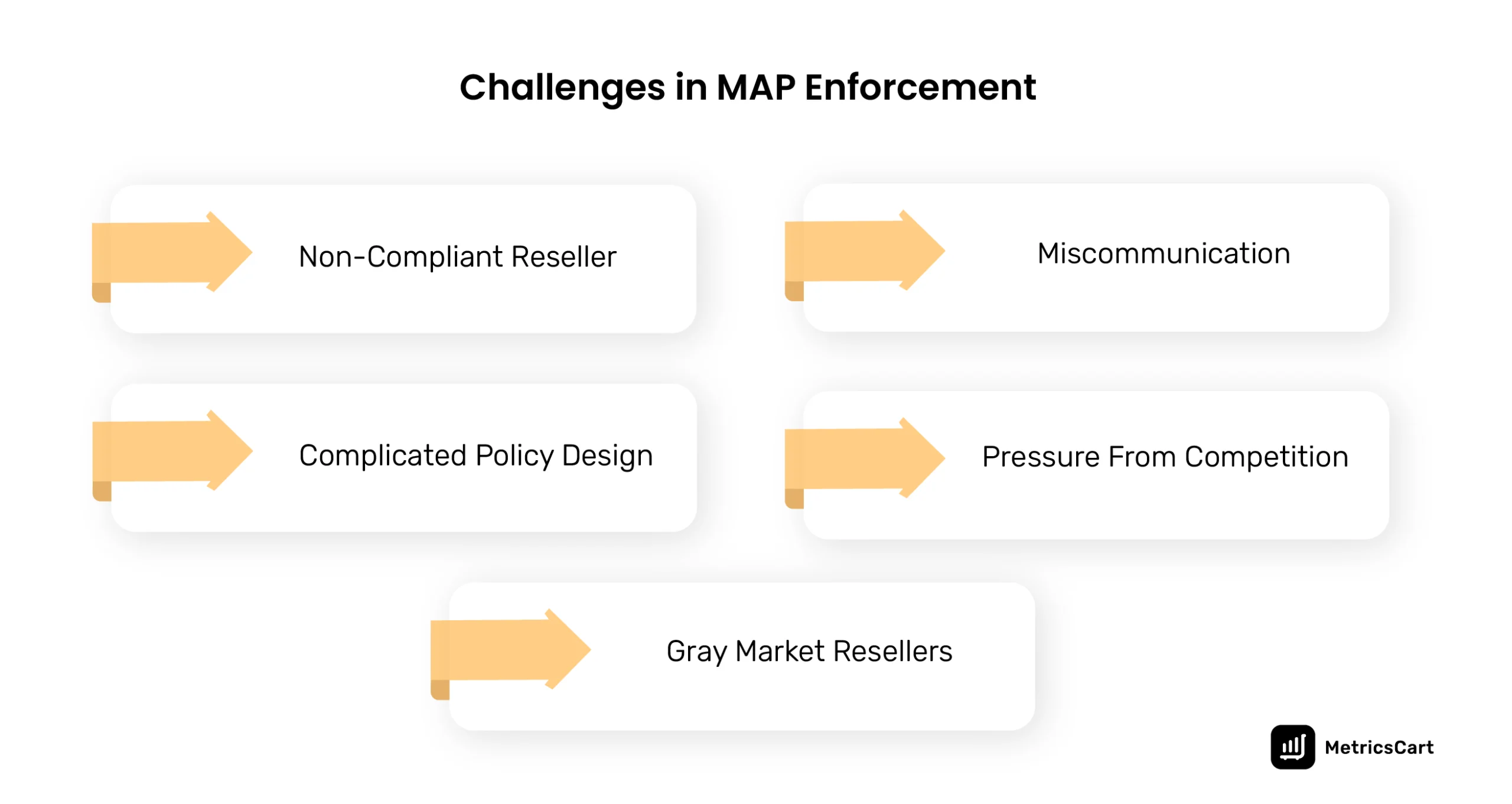
Following are some of the challenges for MAP enforcement:
Implementation Difficulty
Brands distribute their products to many resellers dispersed across different locations. The brand’s MAP policy binds all of them. Identifying a violator and enforcing MAP policies throughout this vast network can be tough.
Other aspects, such as distribution channel disruptions, the presence of unauthorized sellers, etc., can further increase the difficulties of implementing the MAP policy.
Minimum advertised price monitoring and enforcement services like MetricsCart can make the job easier by automating the process of identifying violators throughout platforms.
Communication Consistency
Because of the sheer volume of resellers in the e-commerce retail space, brands find it difficult to consistently monitor and reach out to all of them. A transparent communication channel between the brand and the sellers promotes mutual respect and confidence.
Proper communication will make the MAP policy executable and ready for compliance. Appeals and replies regarding MAP enforcement will also happen without any lags.
Favoritism toward particular sellers can attract unwanted consequences, like antitrust lawsuits, which could reduce the brand’s overall goodwill.
The Gray Market Problem
The fundamental process of online MAP enforcement is identifying violators and enforcing MAP policy. But what happens if violators can’t be traced? Most gray market retailers are not legally registered with the brand to sell its products.
They create a chain of problems for brands like:
- Identifying genuine sellers
- Illegal selling methods
- Non-compliance to MAP policy
- Affects quality sellers
Gray market resellers engage in a phenomenon called Amazon listing hijacking. They list counterfeit products of brands and sell them at low prices for profit. This hampers healthy competition and reduces the profit margins of genuine sellers in the Amazon marketplace. It also results in price erosion and a poor reputation for the original brand.

How To Enforce MAP Pricing?
In the US, a MAP policy is a descriptive legal document that provides all the necessary information concerning minimum advertised pricing. It should clearly articulate the actions and penalties to enforce after identifying a violation.
Some brands follow a three-strike policy when dealing with MAP violations. After three chances, the reseller is permanently banned from selling the brands’ products in any online or offline marketplace. In certain extreme cases, the brand might charge a heavy penalty to the violator.
Following are the significant steps involved in MAP policy enforcement:
- Fix a MAP enforcement service to monitor resellers across different marketplaces.
- Create a MAP violation letter, preferably using a widely accepted template.
- Always communicate appeals and replies through a credible antitrust lawyer.
- Make sure penalties have regular follow-ups.
- Filter out problematic resellers without compromise.
- Identify supply chain leaks and cut gray market resellers.
Read more: Best MAP Monitoring Software in 2024
MetricsCart MAP Monitoring & Enforcement: Always Ahead of the Curve
Other pricing policies, like unilateral pricing policy (UPP) and MSRP, are also used by manufacturers to suggest particular price points to resellers. Unlike MAP policy, these are not bound by any agreements and are free from lawsuits and antitrust laws.
As discussed, an efficient MAP monitoring service helps maintain a healthy relationship between brands and resellers. The MAP enforcement strategy can be efficiently executed by identifying the violators on time.
Get hold of violators at lightning-fast speeds. Receive real-time alerts on MAP violations and get customized reports delivered weekly with MetricsCart MAP monitoring and enforcement.
MetricsCart MAP monitoring and enforcement software delivers detailed insights on:
- Authorized vs. unauthorized sellers
- Total violations sorted by seller, product, or retail channel
- MAP violations on newly launched products
- Overall violation trends
- Tiered enforcement action plan
Contact MetricsCart for more information.
Struggling to Enforce Pricing Policies?





